Arslanbob Walnut Harvest:
A Month in the Forests of Kyrgyzstan
Kyrgyzstan is full of small stories. A successful microfinance project here, a village with a long history of training fighter pilots there, and any number of interesting back stories to be stumbled across by travelers or locals alike. One of the most well-known of those, though I find it no less interesting for that, is the Walnut Harvest in the woods outside of the small village of Arslanbob.


For a month or more each year, families from the village move en masse into the forests to collect walnuts from these forests that are said to be the source of the seeds that Alexander the Great himself introduced to Greece and the rest of Europe.
From these 60 thousand hectares of forests on the border between Kyrgyzstan and Uzbekistan money radiates inward to the Kyrgyz towns of Bazar Korgon and Jalalabad to provide jobs for walnut crackers and market vendors biznezmen who export the nuts as far abroad as Russia, Iran, and Turkey.

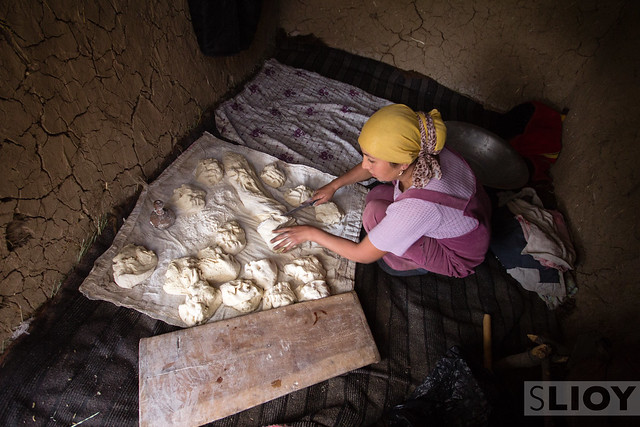
Of greater immediate impact to us, though, are the people themselves. The villagers of Arslanbob who lease plots in these forests for years at a time, hoping for a bumper crop to provide extra income. Economic opportunities are thin in Arslanbob for most of the year, with up to half of the men from the area migrating to cities like Krasnoyarsk or Novosibirsk for work in higher-wage but tougher-life Russia. One villager/harvester I spoke with, Ilhon Nazhiev, describes the walnut-harvest as his favorite time of the year. The forests and mountains are beautiful, the weather is nice, and (most importantly) he gets to spend time with family. With Ilhon, his brother, and their wives and children all sharing one camp deep into the forest it seems as if they have plenty of opportunities to bond and joke and laugh. As he feeds us meat-dumplings (manti) and cup after cup of tea, Ilhon speaks eloquently of how much he enjoys these weeks.
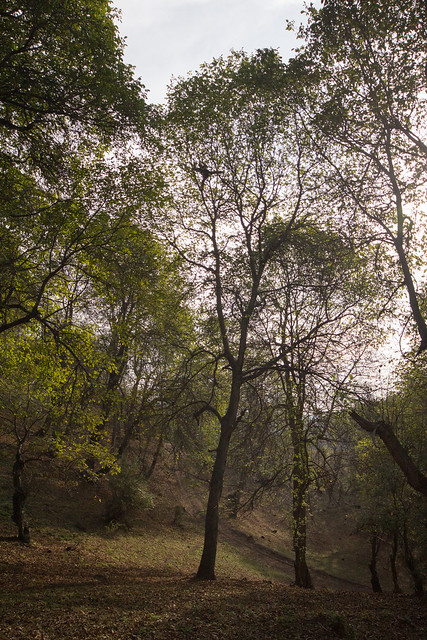

Not all their time is spent on leisure, of course, as their very hands will attest. As the men and older boys climb high into treetops to literally shake walnuts loose from the branches, the girls and women fill bag after bag from the base of these towering trees. Within days, I’m told, oil from the walnut shells will dye every pair of hands around a deep brown that will linger long after the harvest has finished.

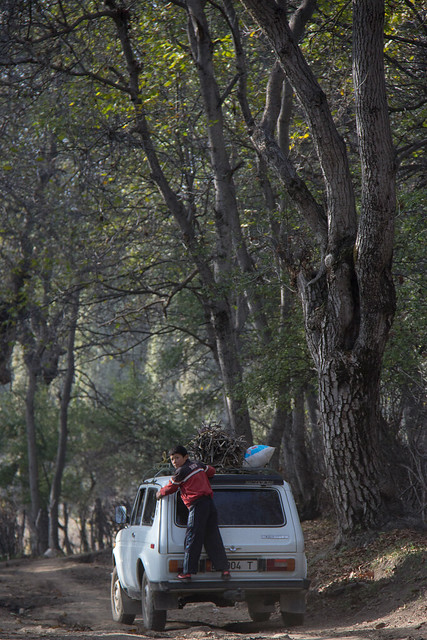
Especially for the families that live this deep in the forest, a trip back to the village is a once-per-week trip at most. One long and winding dirt road winds back through the forest, and local game wardens ride up and down the road on horseback to check that each family keeps the limit of their lease and that no foreigners are camping without permission.


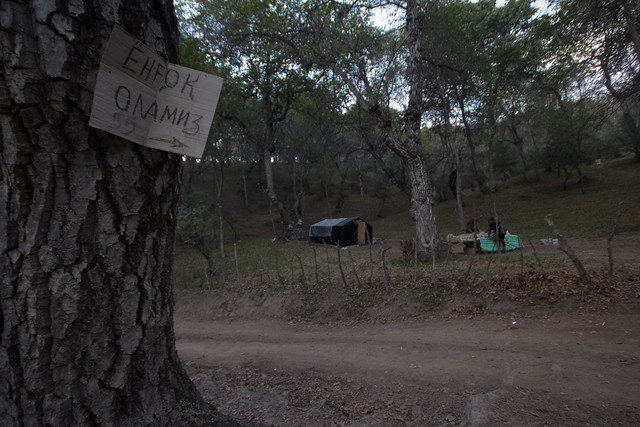
This semi-seclusion isn’t actually a source of much distress, though, as the majority of camps have enough cows/sheep/horses/chickens to be totally self-sufficient. Many, like Ilhon and family, have even built tandoor ovens nearby to make sure they never want to fresh bread. What few needs do still exist, cigarettes and soda mostly, can be filled from the handful of camp-stores within a few hours’ walk on the road.

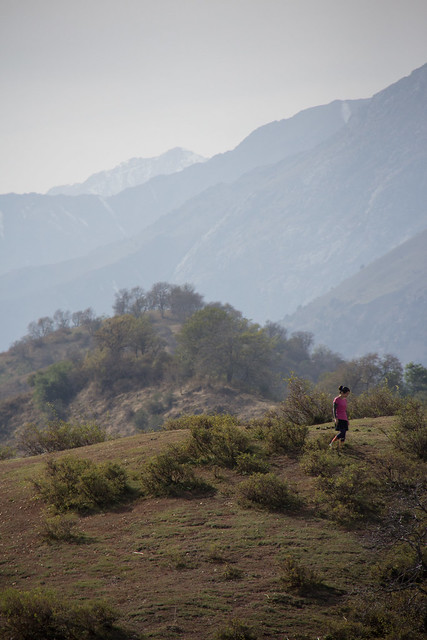
The time between the start of the harvest and the first snow in the surrounding mountains is only 5 or 6 weeks, so emphasis is very much on collecting as many walnuts as possible in this period. On a good year, the community might collect 2,000 tons of walnuts (around 2 tons per family). These years are few and far between, though, with an average year producing more like 500lb per family. With an immediate selling price of 50 som/ kg (a little more than $1), this money makes a significant difference in a country with a per capita GDP of $1160 in 2012. For those with the means to shell and store the nuts until mid-winter (once the initial glut is gone from local markets), the return can be double or more. Sadly, many families simply have neither the facilities nor the financial flexibility to do so.
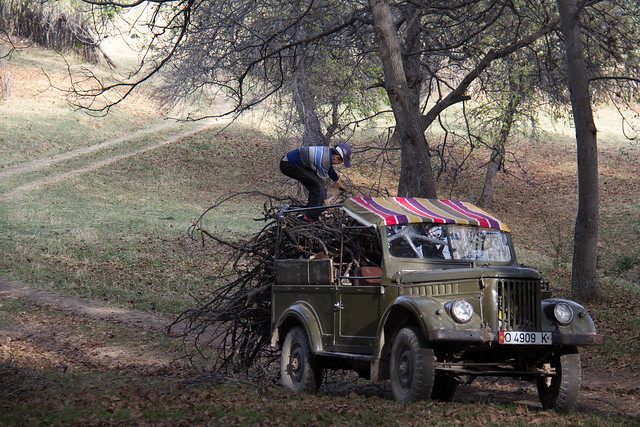
With strict controls on tree-cutting and communal pooling of the harvest, management of the Arslanbob Walnut Forests was actually much more closely monitored during Soviet times. In recent year, overgrazing by livestock and over-harvesting by private lessees has seen significant drops in output from the trees. Only time will tell whether these forests, which have grown for nearly 1,000 years to become the largest walnut groves on Earth, can continue to support the families like the Nazhievs which rely on them so heavily.





So when does harvesting season begin?
It differs every year depending on the trees, but generally late Sept/ early Oct.
Enjoyed this story. Thanks